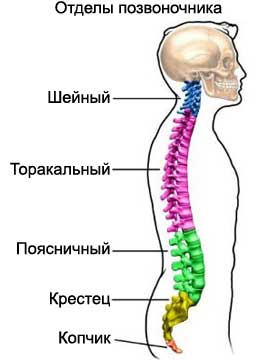Autonomous dysreflexia – FROM – Hyperreflexia
Description autonomic dysreflexia
Autonomous dysreflexia (FROM) a disorder, which is most common in patients with spinal cord injuries. The anomaly of the autonomic nervous system results to the abnormal reaction of the body after spinal cord injury. The autonomic nervous system controls involuntary body functions, such as digestion, heart rate and respiratory rate.
If there are problems in the body below the level of the spinal cord injury (eg, overflow bladder), the body tries to send nerve signals to the brain. But due to spinal cord injury, they can not reach it. This causes a reaction, which may cause an increase in blood pressure to dangerous levels. Due to spinal cord injury signals from the brain may not be transmitted below the level of injury, to control blood pressure.
Blood pressure can lead to serious problems. If the disorder is not treated immediately, this may lead to seizures, stroke and death. Treatment should be aimed at finding and eliminating problems, which is the cause of the reaction.
Causes of autonomous dysreflexia
AD may be caused by reasons, that before a spinal cord injury caused pain or physical discomfort. The most common cause of AD is the overflow of the bladder. The bladder may become congested due to blockage of the catheter, infection (cystitis), spasms or stones.
Other causes of AD include:
- Intestines, filled with gas or feces;
- Wearing uncomfortable clothes;
- Skin Irritation;
- Wounds;
- Bedsores;
- Burns;
- Fracture;
- Delivery;
- Menstrual pain;
- Sex, where there are painful sensations;
- Ingrown toenails;
- Appendicitis;
- Gastric ulcer.
Risk Factors autonomous dysreflexia
Blood pressure in people, who have spinal cord at T6 and above. The disorder also occurs in people with recent spinal cord injury.

Symptoms of autonomic dysreflexia
Symptoms may include:
- Pounding headaches (caused by high blood pressure);
- Sweating above level of spinal cord injury;
- Nasal congestion;
- Blurred vision;
- Slow heartbeat;
- Blotchy skin above the level of spinal cord injury;
- The feeling of anxiety;
- Reddened face;
- Refine in Gruda;
- Nausea;
- Goose bumps below the spinal cord injury;
- Cool, clammy skin below the level of spinal cord injury.
Sometimes even no symptoms.
When checking the blood pressure, pay attention to its increase.
Diagnosis of autonomous dysreflexia
Availability is expected in AD cases, observed when the above symptoms or when the patient with spinal cord at T6 and blood pressure rises above.
Treatment of autonomous dysreflexia
Treatment depends on the cause of autonomic dysreflexia. The main goal of treatment is to eliminate the causes of, causing blood pressure. If there is suspicion of blood pressure, necessary:
- Sit up, to reduce blood pressure;
- If possible, you need to keep your head up, and bowed legs;
- Frequently measuring the blood pressure;
- Loosen or remove clothing, shoes, a bandage on his leg or used belts;
- Monitor the bladder. Overflow bladder is one of the most common causes of autonomic dysreflexia;
- If you suspect, that the cause of autonomic dysreflexia can be gut, you need to conduct a survey of the intestine;
- If you can not find the cause, or if symptoms persist or worsen, immediately seek medical advice.
After, the problem will be solved, You should remain in an upright position, and blood pressure checked regularly, until you feel normal.
To reduce blood pressure, your doctor may prescribe the necessary medication.
Prevention autonomous dysreflexia
Preventing blood pressure is very important. If you have a permanent bladder catheter, Follow these steps:, to avoid problems, which can lead to autonomous dysreflexia:
- Check, that the catheter tube does not contain kinks;
- Regularly clean the drain capacitance;
- Check, that the drainage tank is located below the bladder;
- Check daily for signs of wear catheter or having problems.
Other steps, you can take, to prevent AD:
- Regular bowel movements;
- Avoid tight clothing or restrict movement;
- Regularly check your skin for signs of wounds and bedsores;
- Avoid actions, that can burn or damage the skin (eg, exposure to the sun, It is in very hot water);
- Have regular medical check, to monitor the state of health.
